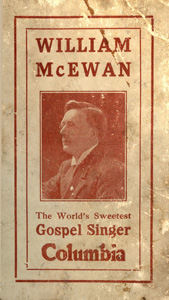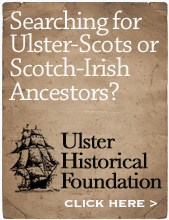We were in Somerset again recently, and I visited the Monmouth Rebellion visitor exhibition at Westonzoyland St Mary's Church (link here) and the remote, nearby, Battle of Sedgemoor Memorial which is around a 15 minute walk along stony tractor lanes out onto the Somerset 'Levels'. No grand white marble 'national' masterpiece here, just a simple community monument among straggly trees. We also went to Glastonbury and saw there the brass coloured memorial plaque in an entry to the six unnamed men who were hanged from the sign of the White Hart Inn the day after the battle, on 7 July 1685 - "their bodies left to infect the air"*.
• At the Battle of Sedgemoor on 6 July 1685 an estimated 1300 of the 'rebel' men were killed, they were mostly just civilians who had armed themselves to oppose King James II's army. Many of their bodies sank into the marshes and still lie there; artefacts and home-forged weapons are dug up from time to time.
• The show trials of the 'Bloody Assizes' began on 25 August, during which 850 were sentenced to "transportation" and sold as slaves to the Caribbean sugar plantations owned by King James II's friends (his wife got the money) and a further 350 or so hanged, drawn & quartered at 50 locations in the West Country.
• But in between the battle and the trials, for the interim six or seven weeks Lieutenant-General Percy Kirke's regiment, not long back from Tangiers in Morocco, conducted a murderous rampage across the south west**. I've not been able to find the statistics of how many they killed, but I'll be back over again later in the year so will find out more at this new exhibition, 'After Sedgemoor' at the Museum of Somerset.
In The Last Popular Rebellion; the Western Rising of 1685 by Robin Clifton (1984) he says that "Kirk's troops marched from Bridgwater to Taunton spreading fear before them, while the militia reorganized itself to begin a great manhunt over the whole county. The fighting was over, the terror was yet to come". The church records from Westonzoyland recorded 1384 corpses, with yet more unrecovered in cornfields three miles away at Chedzoy; a pit for 174 bodies was dug and filled.
But what of Ireland? Four years later, and desperate to cling to power, in 1689 it seems that King James II authorised similar butchery and brutality here. Lord Galmoy, Piers Butler, had regiments in the west of Ireland, and also a regiment in County Down who were active in the 'Break of Killyleagh' which I have been researching for a while now. This quote is from a 1693 source, and not for the faint of heart:
"The Lord Galmoy was likewise sent with forces to guard the passages between the north of Ireland, and those parts of Munster and Connaught that adjoined to Ulster, to prevent the south and western Protestants from joining, who being a malicious and bloody Papist, first drew blood there, causing two gentlemen who had taken arms for their own defence, under Colonel Sandason (Sanderson), to be hanged on a signpost at Belnahatty (Bellaheady), and their heads being cut off, were kicked about the streets by his soldiers, like foot-balls;
at Omagh he took two others upon the same pretence, and caused the son first to hang his father, and carry his head on a pole through the streets, crying, ‘This is the head of a traitor;’ and then the young man himself was hanged.
It was also reported, that some of his dragoons meeting with a clergyman's wife, whose husband had fled northward, several of them, one after another, ravished her, and then ripped up her belly, and exposed her with a dead man upon her.
At Tipperary, an English gentleman seeing some dragoons marching towards his house, shut up his doors (it being late in the evening), as if they were gone to bed; but sixteen of them coming thither, and not being quickly admitted, they forced open his doors, calling him traitor for shutting them against the King's forces; and having pillaged all things of value, they then deflowered his daughter and only child before his face; all sixteen lay with her, and three of them (as was affirmed by his family) after she was actually dead.
These were the beginnings of the villainies which the Protestants suffered from these execrable wretches."
And also this:
"Galmoy was deaf to any thing could be offered in behalf of the two Prisoners but caused them both to be hanged on sign post, had their heads cut off, which he gave to the Soldiers for foot-balls, who when they had pleased themselves for some time with this barbarous diversion the infamous Galmoy ordered them to be set on the Market-house in Belturbet, to remain a spectacle of his dishonour, and their constancy. It is said that Maguire was so much disgusted at this action that he returned to Crom, threw up his Commission, and would serve K James no longer.
This inhuman treatment of these young Gentlemen more and more demonstrated to the Protestants the necessity of their uniting firmly together, and the inhabitants of Derry and Inniskillen having thus bid defiance to Tyrconnel, encouraged the Protestants of other parts to put upon their defence..."
A Monmouth rebel who survived to tell the tale, and to write others, was John Oldmixon. In his Memoirs of Ireland (1716) he described Galmoy, twice, as an 'infamous wretch':
There was among them an infamous wretch, whom no titles could honour; Pierce Butler, Viscount Galmoy. He had a Regiment of Horse, which was quarter'd on the borders of Ulster...
These are unimaginable war crimes. These accounts from Ireland would once have seemed extreme to me, but when we "zoom out" from merely Ireland and balance these with what is known about what King James II had authorised his army in the West Country of England, and of the barbarities his regiments inflicted upon Scotland even earlier, starting during his years there as Duke of York – and also what James II's cousin Louis XIV was doing to the Huguenots in France – it's entirely plausible.
That being the case, to reduce the 1688 Revolution which finally overthrew James II to merely being an encounter between two kings and their armies on opposing banks of a river, of generals and military strategy all overlaid with a quasi-religious gloss, is to utterly utterly miss the point.
"Zoom out" even further, leaving the narrowness of Ireland behind, and the Glorious Revolution was the Liberation of Europe.
* from The Last Popular Rebellion; the Western Rising of 1685 by Robin Clifton (1984), p 224.
** In The Western Rising, an Account of Monmouth's Rebellion by Charles Chenevix Trench (1969) a letter from Kirke is quoted in which, one week after the Battle of Sedgemoor, he said that "the rebels lately buried are not sufficiently covered ... press ploughs and men to come to the said place where the rebels are buried that there might be a mound erected on them".







0 comments:
Post a Comment